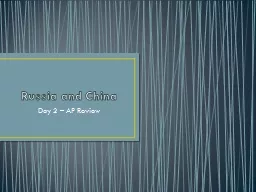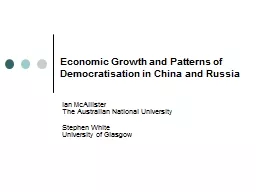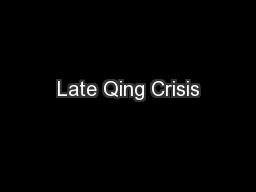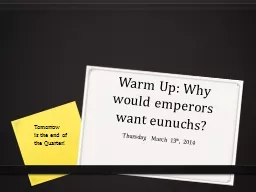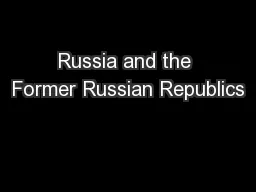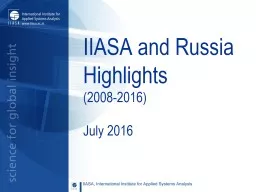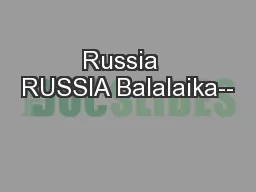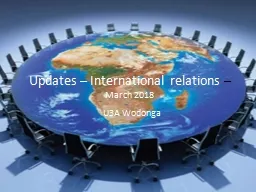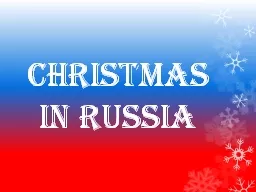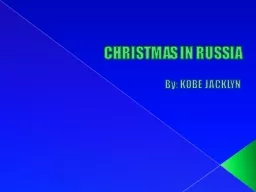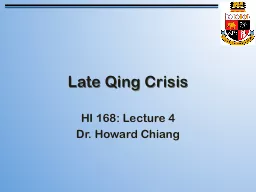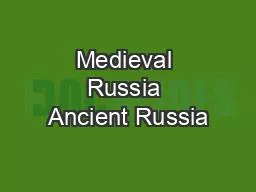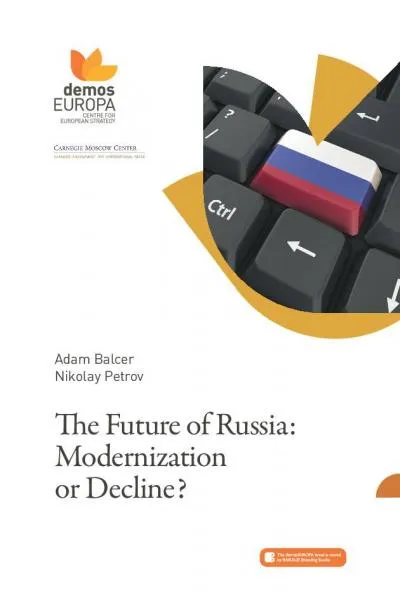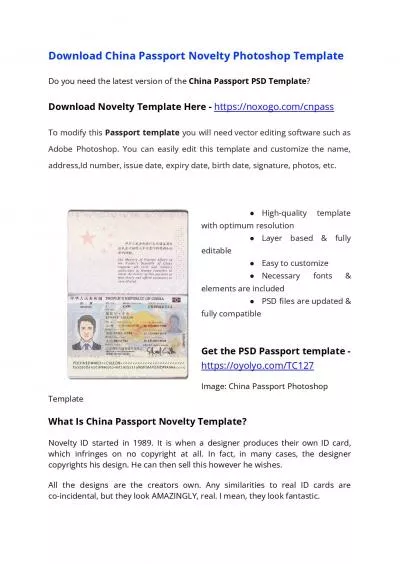PPT-Russia and China
Author : briana-ranney | Published Date : 2017-03-28
Day 2 AP Review Russia Sovereignty Authority and Power Studied as country in transition from communism to democracy Under USSR was totalitarian regime with command
Presentation Embed Code
Download Presentation
Download Presentation The PPT/PDF document "Russia and China" is the property of its rightful owner. Permission is granted to download and print the materials on this website for personal, non-commercial use only, and to display it on your personal computer provided you do not modify the materials and that you retain all copyright notices contained in the materials. By downloading content from our website, you accept the terms of this agreement.
Russia and China: Transcript
Day 2 AP Review Russia Sovereignty Authority and Power Studied as country in transition from communism to democracy Under USSR was totalitarian regime with command economy Today is an illiberal democracy. New Global Players in the Twenty-First Century. Global Issue 3. Questions. Who has power globally?. Are there . historical . trends of global power?. What are the cultures of global powers?. Where are the global powers of the world?. Democratisation in . China and Russia. . Ian McAllister. The Australian National University . Stephen White. University of Glasgow. Economic Development and Democracy. Theories of modernization: more economically developed, greater likelihood of democratization . HI 168: Lecture 4. Dr. Howard Chiang. Empress . Dowager . Cixi. Zongli. . Yamen. The Changing Context. 1861: . Zongli. . Yamen. 1864: international law. 1873: foreign audience no kowtow. 1876: diplomatic missions. Thursday, March 13. th. , 2014. Tomorrow . . is the end of the Quarter!. Objective: . I will be able analyze a document.. Language . Objective: . I will be able to write complete sentences by including the question in my answer.. Physical Geography. Russia…it’s big. Russia’s Land Size. A comparatively small (<145 million[The USSR had 293 m.]) and concentrated population.. Concentrated development.. Multicultural state.. (2008-2016). January 2017. CONTENTS. Summary. National Member Organization. Some Leading Russian Personalities. Associated with IIASA. Research Partners. Research Collaborations: Selected Highlights. it . descended from the . domra. , an instrument from the . Caucasus region. of Russia. . There . is also similarity to the . Kazakh . dombra. , which has 2 strings, and the . Mongolian . topshur. .. – . March 2018. U3A Wodonga. The Mysterious train in Beijing. Meanwhile is Kim Jong Un in China – has not left NK for 7 years. The trains and who summoned who? Beijing letting NK know they have a stake in the talks? NK also desperately need China. Like Dad – fear of flying – Stalin?. Christmas in Russia What do you know about Russia? Russia has the same color as the USA flag. The capital of R ussia is Moscow T he Continent of R ussia is Europe and A sia Russia population is 146 million CHRISTMAS IN RUSSIA By: KOBE JACKLYN Flag Of Russia The Russian flag is red on bottom , blue in the middle and white on top. It was first made in 1923 http://toptravellists.net/russian-flag-wallpaper.html Dr. Howard Chiang. Empress . Dowager . Cixi. Zongli. . Yamen. The Changing Context. 1861: . Zongli. . Yamen. 1864: international law. 1873: foreign audience no kowtow. 1876: diplomatic missions. Universal empire (. For thousands of years, Slavs lived in the Dnieper River Region. 850 C.E.. Russia settled by . Scandinavians . (called Rus). People from Norway, Sweden, Finland. Main city is Novgorod, then moved to Kiev. Warsaw 2012This report was published within the framework of the project Russia and challenges of modernization implications for the EU and Poland as a part of the programme Promotion of knowledge abo China Passport PSD Template. Fully customizable Photoshop layered PSD files. Put any Name, DOB, Passport No., etc. to make your own personalized China Id.
Download Document
Here is the link to download the presentation.
"Russia and China"The content belongs to its owner. You may download and print it for personal use, without modification, and keep all copyright notices. By downloading, you agree to these terms.
Related Documents

